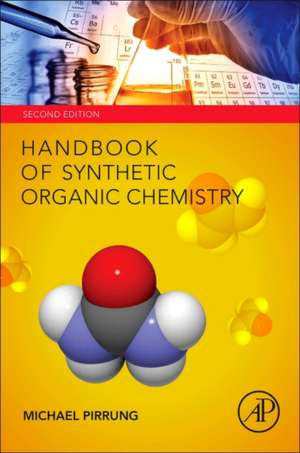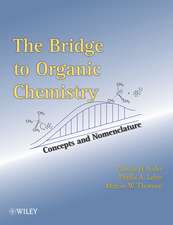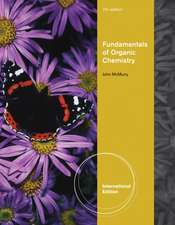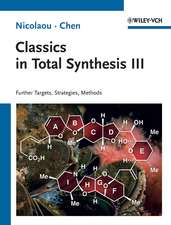Handbook of Synthetic Organic Chemistry
Autor Michael C. Pirrungen Limba Engleză Paperback – 14 sep 2016
The book maintains the useful organization of the author’s earlier work, beginning with a basic overview and walking through every practical step of the process of organic synthesis, from reagents, solvents, and temperature control, to documentation, implementation, purification, and analytical methods for the product.
From planning and setting up reactions, to recording them, the book provides insight and valuable guidance into every step of the process.
- Contains practical information for every part of the process that are coupled with engaging, real-world examples
- Presents useful guidance for conducting literature searches, handling and preparing reagents, working up the reaction, and identifying the product
- Presents valuable coverage of conventional and microwave temperature control, paper and electronic research notebooks, eluent selection, Schlenk lines, purification methods and determination, chiral chromatography, chemical safety, and more
Preț: 441.08 lei
Preț vechi: 479.44 lei
-8% Nou
Puncte Express: 662
Preț estimativ în valută:
84.43€ • 91.74$ • 70.96£
84.43€ • 91.74$ • 70.96£
Carte tipărită la comandă
Livrare economică 14-28 aprilie
Preluare comenzi: 021 569.72.76
Specificații
ISBN-13: 9780128095812
ISBN-10: 0128095814
Pagini: 288
Dimensiuni: 152 x 229 x 18 mm
Greutate: 0.48 kg
Ediția:2
Editura: ELSEVIER SCIENCE
ISBN-10: 0128095814
Pagini: 288
Dimensiuni: 152 x 229 x 18 mm
Greutate: 0.48 kg
Ediția:2
Editura: ELSEVIER SCIENCE
Public țintă
Organic chemistry researchers and advanced studentsCuprins
1. Safety2. Searching the Literature3. Reagents4. Gases5. Reactions on a Small Scale—1–25mmol6. Temperature Control7. Solvents8. The Research Notebook9. Conducting the Reaction Itself10. Following the Reaction11. Working Up Reactions12. Evaporation13. Vacuum Systems14. Purification of Products15. Methods for Structure Elucidation16. Cleaning Up After the Reaction17. Specific Example18. Strategies for Reaction Optimization









